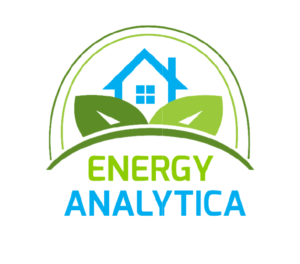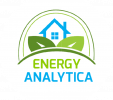Section ‘Cement and Concrete’ of California Green Building Code is an elective measure applicable for all Non-Residential buildings. It can be used in the projects where new concrete is being poured. The code language is as follows.
CALGreen Code Section A5.405.5: Cement and concrete.
Use cement and concrete made with recycled products and complying with the following sections:
CALGreen Code Section A5.405.5.1: Cement.
Cement shall comply with one of the following standards:
1. Portland cement shall meet ASTM C150, Standard Specification for Portland Cement.
2. Blended cement shall meet ASTM C595, Standard Specification for Blended Hydraulic Cement or ASTM C1157, Standard Performance Specification for Hydraulic Cement.
3. Other Hydraulic Cements shall meet ASTM C1157, Standard Performance Specification for Hydraulic Cement.
CALGreen Code Section A5.405.5.2: Concrete.
Unless otherwise directed by the Engineer of Record, use concrete manufactured with cementitious materials in accordance with Sections A5.405.5.2.1 and A5.405.5.2.1.1, as approved by the enforcing agency.
CALGreen Code Section A5.405.5.2.1: Supplementary cementitious materials (SCMs).
Use concrete made with one or more supplementary cementitious materials (SCM) conforming to the following standards:
1. Fly ash conforming to ASTM C618, Specification for Coal Fly Ash and Raw or Calcined Natural Pozzolan for Use in Concrete.
2. Slag cement (GGBFS) conforming to ASTM C989, Specification for Slag Cement for Use in Concrete and Mortars.
3. Silica fume conforming to ASTM C1240, Specification for Silica Fume Used in Cementitious Mixtures.
4. Natural pozzolan conforming to ASTM C618, Specification for Coal Fly Ash and Raw or Calcined Natural Pozzolan for Use in Concrete.
5. Blended supplementary cementitious materials conforming to ASTM C1697, Standard Specification for Blended Supplementary Cementitious Materials. The amount of each SCM in the blend will be used separately in calculating Equation A5.4-1. If Class C fly ash is used in the blend, it will be considered to be “SL” for the purposes of satisfying the equation.
6. Ultra fine fly ash (UFFA) conforming to ASTM C618, Specification for Coal Fly Ash and Raw or Calcined Natural Pozzolan for Use in Concrete, and the following chemical and physical requirements:
[Table of values for UFFA is omitted for clarity. See the CALGreen Code.]
7. Metakaolin conforming to ASTM C618, Specification for Coal Fly Ash and Raw or Calcined Natural Pozzolan for Use in Concrete, the following chemical and physical requirements:
[Table of values for metakaolin is omitted for clarity. See the CALGreen Code.]
8. Other materials with comparable or superior environmental benefits, as approved by the Engineer of Record and enforcing authority
CALGreen Code Section A5.405.5.2.1.1: Mix design equation.
Use any combination of one or more SCM, satisfying Equation A5.4-1. When ASTM C595 or ASTM C1157 cement is used, the amount of SCM in these cements shall be used in calculating Equation A5.4-1. Exception: Minimums in mix designs approved by the Engineer of Record may be lower where high early strength is needed for concrete products or to meet an accelerated project schedule.
F/25 + SL/50 + UF/12 ≥ 1 (Equation A5.4-14)
where:
F = Fly ash, natural pozzolan, or other approved SCM, as a percent of total cementitious material for concrete on the project.
SL = GGBFS, as a percent of total cementitious material for concrete on the project.
UF = Silica fume, metakaolin or UFFA, as a percent of total cementitious material for concrete on the project.
Intent:
The intent of these measures is to encourage the use of alternative supplementary cementitious materials (SCMs) which would otherwise be industrial byproducts that would make their way into the waste stream, as a replacement for the energy-intensive transformation of limestone and clay to cement in the manufacture of concrete. Using the ASTM standards listed above, see Equation A5.4-1 and the Exception to determine minimum portions of the various SCMs that may be substituted for cement.
Compliance Method:
Design team: Show in the engineering specification that the concrete mix designs intended to be used on the project contain the required amount of SCMs. Total SCMs including F, SL and/or UF (as defined above) may be added in any combination that satisfies ASTM standards listed in this code section and Equation A5.4-1 where the total minimum SCMs for amount of concrete being mixed is one (1).
Example use of Equation A5.4-1:
For a batch of concrete that requires 400 pounds of cementitious materials with a 50-percent addition of cement and 50 percent SCMs
Using Equation A5.4-1 – F/25 + SL/50 + UF/12 ≥ 1; adding 80 pounds of F or 20 percent and 120 pounds of SL or 30 percent, then
20/25 + 30/50 + 0/12 = 8 + .6 = 1.4, which is ≥ 1; so mix is OK
Contractor: Place concrete for the specified uses that complies with the approved mix design and minimum amount of SCMs.
Enforcement:
Plan intake: The plan reviewer should review the specifications for the minimum SCMs and for any calculations. All concrete used on the project must also meet the structural provisions of the California Building Code. Check that mix design requirements are stipulated.
On-site enforcement: The building inspector should verify mix designs of concrete in accordance with industry standards for substitution of SCMs as prescribed in Sections A5.405.2.1.1 through A5.405.5.
(Excerpted from ‘Guide to the 2019 California Green Building Standards Code Nonresidential’ – Chapter 5)




